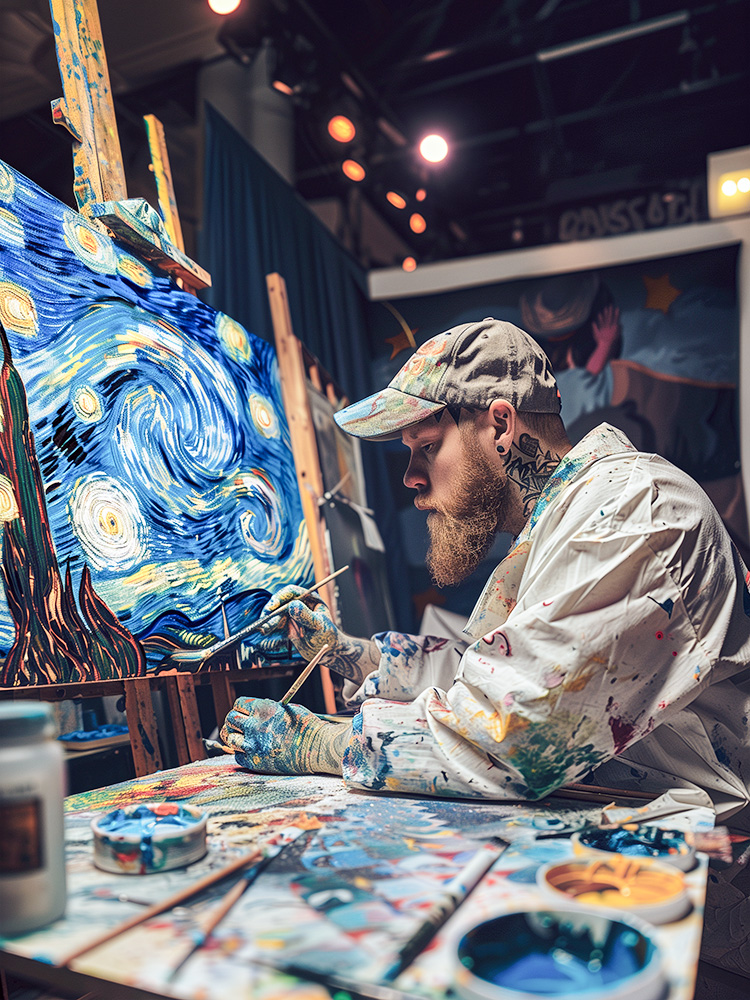The art of deception.
Text: Christoph Dieffenbacher
Many museums and collections have forged artworks hanging on their walls. Accomplished copies can sell for millions and even impact art historians.
The family of Jakob Meyer zum Hasen, mayor of Basel, gather around the Madonna and infant Jesus. This idyllic scene, painted in 1526 by Hans Holbein the Younger, has a checkered history. For centuries, two similar oil paintings with the same title made their way around Europe, frequently changing hands. Why? Because in 1635, an art dealer had a copy made by the little-known painter Bartholomäus Sarburgh – and sold it as a genuine Holbein.
Assumed to be the original, this copy later ended up in the Dresdner kurfürstliche Sammlung art collection, where it garnered great admiration and hung in the same room as Raphael’s “Sistine Madonna”. For a time, the copy was considered Germany’s most valuable artwork. Yet, when the second version surfaced in 1820 from a private Berlin collection and later made its way to Darmstadt, people started questioning which was the original. In 1871, the two paintings were hung side by side in Dresden and a conference was organized at which experts debated which was the original and which the fake.
Dispute as birth.
“The ‘Dresden Holbein dispute’ marked the birth of our academic discipline in Germany,” says Andreas Beyer, Professor of the History of Art of the Early Modern Era at the University of Basel. Initially, supposedly objective stylistic criteria were used as the basis for decisions, followed later by technical methods such as x-rays and infrared. The conference of experts came to the clear conclusion that the Darmstadt version, which had been retouched many times, was the original, while the Dresden painting was the copy. However, the public, including many artists, took the opposite view.
“Art has always been imitated,” explains Beyer, who focuses heavily on forgeries. The ancient Romans copied Greek bronze sculptures in marble. It wasn’t always important for an original work to be crafted by the artist himself: masters such as Rembrandt ran entire workshops and schools at which younger painters produced artworks in their styles. Albrecht Dürer took legal steps to ensure that while copies of his graphic prints were permitted, they were not allowed to bear his signatures.
Fooling others.
An imitation is only a forgery if it is created with the intention of deceiving others. Germany’s Wolfgang Beltracchi is a brilliant master of his craft who before his arrest in 2010 had spent years misleading experts and making millions. Like other forgers, who are usually male, he sees himself as an artist in his own right – he just happened to paint in the style of others before he was exposed. Some copyists, whose works hang in museums undetected, willingly reveal themselves in the hope of public recognition.
Why this fascination with the business of art forgery? Beyer counters with another question: “Who doesn’t like a clever trickster who manages to fool others?” For Beyer, a successful imitation is its own artform and a type of cultural technique, just like fraud and plagiarism. Some people get a secret thrill from pulling the wool over the eyes of the experts. Forgers also attract admiration because many people see art as the faithful reproduction of reality – in this case of existing artworks.
“I see forgeries at the museum every day without even realizing,” says Beyer. Forgeries are estimated to make up 10 percent of public and private collections, possibly more. The number of unrecorded cases is high. According to Beyer, “the art market is incessantly seeking originals. This automatically attracts the attention of forgers.” Excellent copies have a value of their own; Beyer laments that they are hardly ever appreciated for their quality now and usually end up in museum warehouses.
A trained eye and intuition.
Despite many scientific and technical advances, it is still not easy to tell a copy from an original. Rather than knowledge of art history, this often requires what Beyer terms “connoisseurship”: the intuition and trained eye necessary to spot subtle differences in technique and style. People who possess this talent usually reach a verdict in few words. And then there’s the phenomenon known as “period eye”: “Forgers and experts share the same contemporary taste. So modern forgeries are harder to spot than older ones.”
Again and again, world-famous cultural treasures are suspected of being forgeries. For example, Beyer is convinced that the iconic Nefertiti Bust in Berlin is a fake. He thinks the bust was created around just 100 years ago from limestone and plaster, not in the Ancient Egypt of the Pharaohs. His reasoning? “For me, Nefertiti here looks far too much like someone from the silent movie era.” Still, he says with convincing reassurance, he’s glad he doesn’t have to provide any proof for his suspicions.
More articles in this issue of UNI NOVA (May 2024).

